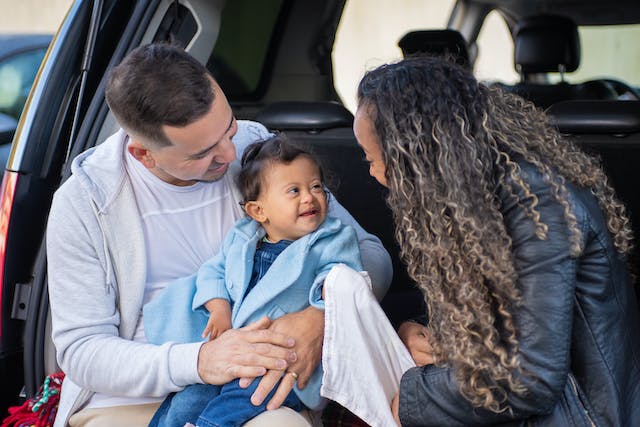
The origin of the phrase ‘my home is my castle’ dates back to the 17th century when Sir Edward Coke introduced the term in his book ‘Institutes of the Laws of England 1628′. The Latin words used by Sir Edward roughly translate as ‘our home is the safest refuge for everyone’.
We feel our children are at their safest when they are home with us, especially when they are very young. True, there are still plenty of potential hazards at home: open fires, hot radiators, electrical equipment, doors that slam shut, stairs, poisonous household substances, and more. However, as responsible parents, we believe we are well placed to educate our children about the everyday dangers lurking in our homes.
However, we can’t keep them at home 24/7, even when they are very young, and it wouldn’t be healthy if we did. Children need exercise and fresh air. They have to go to school; they want to play in the playground, go to the park, or enjoy the thrills of a visit to the funfair.
When our children become old enough, for increasingly long periods of the day, we delegate some of our duty of care to keep our youngsters safe to school teachers.
As our kids grow, we learn to let go more and more, trusting that we have educated them sufficiently about staying safe on the roads, pavements, parks, and in busy towns and cities. Our offspring remain children until they turn eighteen, and few of them would welcome Mum or Dad being with them everywhere they go, even some years before they officially become adults.
However much trust we have in our children when they are in public spaces on their own or have faith in the teachers whose duty it is to keep them safe during the school day, accidents happen – and here’s the rub: our children can be susceptible to having accidents even when they are with us at the park, in supermarkets, cafés, shopping centres, or on the road or pavement.
Most parents accept their children will suffer minor bumps, bruises, and cuts from the daily rough and tumble of being a child. A rite of passage, you might say.
Accidents involving children in public places are often nobody’s fault – but what if they are someone else’s fault?
When responsibility for a child’s accident lies with another person, a local authority or a business owner, the child’s parents (or guardians) may be able to bring a personal injury claim to recover compensation from the party at fault for the accident.
Where do most accidents involving children in public places tend to happen?
1.Schools
Although strictly speaking, schools are private property and the general public has no right to enter them without authority. Nevertheless, accidents at school still tend to be referred to as’ accidents in public places’.
Around 400,000 children are injured in accidents at school every year in the UK. By no means are all, or even a majority, of these accidents someone’s fault, but a proportion are.
The types of accidents at school that may give rise to a child accident claim include those which happen:
- In the playground: slips and trips on a wet or icy playground or due to a damaged surface or falls from a faulty climbing frame.
- Due to faulty equipment in the school building: For example, a child may suffer injury from sitting on a chair that’s in a state of disrepair or whilst in the gym while using ageing or damaged equipment.
- As a result of damage to the fabric of the building, including falls due to faulty handrails on stairs or as a result of damaged or uneven flooring,
- From a lack of adequate or any supervision by teachers or other designated supervisors: Examples include during school sports games or training, in the playground, in the classroom, in school corridors whilst on school trips, and in the gym.
- Where a pupil gets injured from being assaulted by another pupil
2. Public parks and playground accidents
Young children love going to the park to visit the playground. Usually, they have an incident-free, wail of a time. However, approximately 750 children a week have to go to A&E due to injuries suffered in playground accidents.
There are plenty of opportunities for accidents in an area with swings, climbing frames, slides and even zip wires.
Fortunately, most playgrounds have been designed to minimise the risk of accidents. On top of that, most have correctly installed and well-maintained equipment that is inspected regularly to check for signs of damage or dilapidation.
Many of the 750 weekly visits to A&E by children injured in playground accidents result from the misuse of the equipment by the child, a lack of supervision by the adult accompanying them or a simple mistake made by the child whilst playing.
Where a playground accident is neither the fault of the child or those accompanying them, many are due to:
- Poor design of the playground
- Poor equipment layout
- Faulty installation of equipment
- An Inadequate system of inspection and maintenance by the playground management, usually the local authority
3. Pavement accidents involving children
We are all susceptible to injuries caused by trips, slips or falls on defective pavements where broken flagstones, damaged curbs and potholes pose a daily hazard. Children are no different; young ones may be even more at risk of tripping over raised flagstones or losing their footing on cracked pavements.
4. Supermarket and shopping centre accidents
Whilst not inherently dangerous places for children to visit with their parents, supermarkets and shopping malls are busy places where accidents happen, most frequently due to slips on wet floors caused by produce from the shelves finding its way onto the floor, customers spilling their drinks or as a result of the staff mopping up said spillages!
Young children can be less aware of the dangers of slipping on wet floors or tripping over obstacles left blocking aisles and, therefore, at a greater risk of being injured due to a shopping mall or supermarket accident.
Conclusion
Children, especially young children, can have tendencies to be accident-prone. As mentioned, most parents accept that their children will suffer bumps, bruises and grazes from time to time. Even in cases where such minor injuries aren’t the child’s fault, we may be inclined to let the matter go and not immediately seek out the services of a firm of specialist personal injury solicitors to pursue a child injury compensation claim.
Unfortunately, not all child accidents result in the youngster suffering minor injuries. Broken bones, burns, head injuries, deep lacerations, spinal injuries and other serious injuries can all be caused by accidents happening in the circumstances described in this article. No parents would dismiss their child suffering any of these types of injury as being ‘one of those things’, especially when the accident that caused them was the fault of someone else.
To successfully pursue a personal injury claim, it is crucial to demonstrate that the person, local authority, or corporate body owed a duty of care to the injured child. Once the duty of care is confirmed, it must be proved there was a breach of that duty, and the child’s injuries directly resulted from it.
Child injury compensation claims are often complex, so it would be sensible to ask a solicitor with experience in both child accident claims and claims for accidents in public places to handle the matter for you on a No Win No Fee basis.


